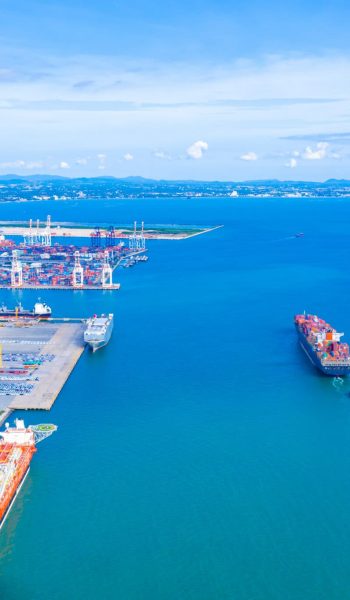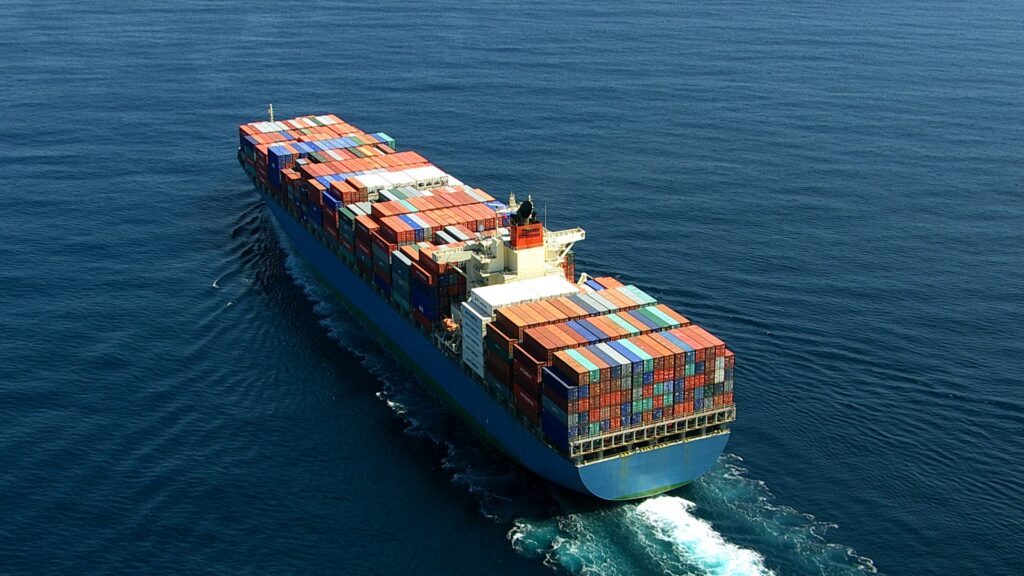In the dynamic realm of maritime logistics, precise timing is paramount. Explore what is ETA and ETD predictions, and also ATD and ATA. Discover how powered by advanced AI algorithms, these predictions are reshaping the efficiency and sustainability of global shipping operations.
The key takeaway of the article:
- Precise ETA and ETD are crucial in the maritime industry to streamline operations and reduce port congestion.
- Inaccurate arrival times lead to supply chain disruptions and environmental inefficiencies.
- Advanced AI algorithms, like Sinay’s, offer solutions for accurate prediction and optimization.
In the shipping industry, it is expected that cargo gets to the right place at the right time and that the delivery of goods goes smoothly. Companies and people around the globe rely on precise predictions of when a vessel will arrive with a shipment of goods and services.
For instance, during the COVID19 pandemic, medical personnel counted on the arrival of essential equipment to save thousands of lives. Most equipment to handle COVID19 such as masks, respirators, and vaccines were and are shipped by sea.
However, particularly in the maritime industry, a precise prediction of when a vessel will arrive and depart is extremely faulty. In fact, only about 50% of vessels arrive when predicted.
With a rise in global trade, tracking vessel times is more important than ever.
Therefore, the shipping and maritime industry has taken well known terms regarding arrival and departure times and recreated definitions based on their activities.
This article will go over the specific terms for arrival and departure for the maritime industry and show how the Sinay ETA Module can revolutionize the shipping industry and port congestion with accurate predicted times.
The Following Terms Are Defined Below Specific to the Maritime Industry:
Estimated Time of Arrival (ETA)
…is when a ship or vessel is expected to arrive at a specific destination. It also helps to see the expected duration of a vessel’s route. The goal is to always be informed about the progress of an ocean sailing vessel.
Example: A vessel leaving from Los Angeles will have an expected time that it is supposed to arrive in Rotterdam. Knowing a precise ETA allows port authorities to be prepared for the vessel’s arrival.
Impact: An accurate ETA can make entire supply chains more efficient and reliable, affecting stakeholders worldwide.
How can AI enhance Your ETA Predicions ?
Read more about how to reduce turnaround time and optimize port calls thanks to smart ETA predictions.

Estimated Time of Departure (ETD)
…is when a ship or vessel is expected to depart.
Example: A vessel leaving from New York will have an estimated time of when it is supped to leave the dock.
Impact: This is important because this time will show how long a vessel will stay at the dock. It will also help to manage when the next vessel can dock in the port.
Actual Time of Arrival (ATA)
…is when a ship or vessel actually arrives at the dock.
Example: The time of arrival can be close to the predicted time or very different.
Impact: If a vessel actually arrives early or late, this will cause an issue for port congestion. Already ports are crowded, so the closer the ATA is to the ETA, the better.
Actual Time of Departure (ATD)
…is when a ship or vessel actually leaves the dock.
Example: The time can also be close to the predicted time or extremely different.
Impact: The actual time of departure communicates whether the vessel was on schedule. Like ATA, it is important that ATD is as close to the ETD as possible to optimize supply chain logistics.
The goal is that ATA and ATD are the same times as ETA and ETD
Why Are ETA, ETD, ATD, and ATA Important?

Estimated and actual times of arrival and departure are extremely important to the maritime industry.
Currently, there are a lot of problems surrounding precise estimated times. This causes issues that have a domino effect across entire supply chains.
Ports:
Port authorities need precise times to reduce congestion, to improve safety and better allocate resources, and to make their port more competitive. This allows port authorities to reduce congestion in port waters as well as to reduce truck traffic outside of the port. When the exact ETA and ETD is known, activities can be better coordinated for all operations. For example, trucks would no longer have to wait extra days to transport cargo, as the process would be optimized. This cuts costs and saves time.
Plus, with reduced congestion, less CO2 is emitted, which equally helps the environment.
Shipping:
Planning and scheduling vessels must be improved due to an increase in globalization and intense global congestion. For instance, a vessel may arrive on time to a port, but if other vessels are late, then the vessel who arrived on time may still have to wait days before docking and berthing. If port authorities knew in advance, they could redirect vessels and better schedule for arrivals.
Businesses and customers use shipping as a main way to order items for their commercial activities. Thus, it is imperative that shipping be more precise. As the world population increases, globalization, demand, and ship size and traffic also increase. A solution for precise ETA and ETD must be implemented for the industry to remain reliable in the upcoming years.
Beneficial Cargo Owners (BCOs):
An accurate ETA helps BCOs (importers of cargo) around the world organize when goods and services will arrive. BCOs rely on precise times for the delivery of goods. Their business activities depend on goods and services every day that arrive on vessels, so an expected time of arrival helps to ensure goods and services are always in stock. This is important regarding BCOs, as some importers even pay more to ensure accurate ETA and ETD of cargo. Further, importers want to know exactly where their cargo is, yet currently most cargo is not tracked, and ETA and ETD are rarely precise.
Large maritime companies handle shipments all over the world. When shipping across the world, a ship may leave from Rotterdam then leave a container with a different ship in Australia. If the ship leaving from Rotterdam is late and a container for one of the BCOs is then left on the quay in Australia, this will produce hefty fines for them. Whereas if the vessel and container were tracked, then business operations could be rearranged to handle the late ETA of the vessel.
Overall, it is important for maritime companies to be able to provide accurate real-time ETA data to improve client relations and competitive advantage.
How can AI enhance Your ETA Predicions ?
Read more about how to reduce turnaround time and optimize port calls thanks to smart ETA predictions.

How to Obtain Accurate Arrival Times
To obtain precise estimated times of arrival and departure, Artificial Intelligence, Big Data, and IoT sensors must be used.
In today’s digitalized world, this is entirely possible. IoT sensors can be attached to ships to track their routes. Then the data collected can be plugged into AI algorithms that can calculate estimated times of arrival and departure based on numerous events. The ocean is constantly changing, and so it is normal that the ETA changes too. What is important is that key stakeholders remain aware of these changes, and that authorities better prepare for arrivals so that congestion is reduced.
Sinay, with their team of AI experts, developed a software based on powerful AI algorithms, the Sinay Hub, that can analyze and predict shipping estimated time of arrival and departure using real-time data.
With AI algorithms like Sinay’s, the maritime industry can make accurate data-driven decisions, as ETA and ETD are the foundation of an efficient supply chain. With an increase in visibility of all vessel activity, BCOs, shippers, and carriers will improve business efficiency by being able to forecast ETA and ETD.
Overall Benefits of Accurate Prediction Time
Accurate ETA and ETD can change the entire shipping industry, and this extreme accuracy is only possible with advanced and powerful AI algorithms. If ports and shipping companies worldwide adopt a software to track vessel routes and predict ETA, then there will be a multitude of benefits including but not limited to:
- Timely arrival of goods and services
- Supply chain improvements
- Reduced port congestion
- More optimized shipping routes
- Reduced fuel consumption
- & Environmental impact improvements
Precise ETA will continue to change the future of the maritime industry.
Frequently Asked Questions About: Estimated Time of Arrival
Estimated time of arrival (ETA) in shipping is the estimated time the the ship will arrive at anchorage (waiting outside the port) or at dock. Estimated time of departure (ETD) is when the ship is estimated to leave the dock.
ETA: Estimated Time of Arrival
ETB: Estimated Time of Berthing (at dock)
ETA can be computed in many ways. One way to compute ETA is using advanced AI algorithms. This tracks the vessel, thus giving a real-time ETA.
ETA of delivery is the expected arrival of cargo at a specific destination.
ETA for business is the estimated time of arrival. This can be the ETA of a cargo ship, vessel, aircraft, truck, car, package, or person.





